Arrival in Walvis Bay or Swakopmund where you will be welcomed by your private guide who will brief you on your day ahead and give you time to ready yourself for the start of the journey. This evening you will be heading off for dinner at a popular restaurant which specializes in locally harvested seafood.
Swakopmund resembles a small, German coastal resort nestled between the desert and the sea. It boasts a charming combination of German colonial architecture blended with modern hotels, shops, restaurants, museums, craft centres, galleries and cafés. Swakopmund had its beginnings as a landing station in 1892 when the German Imperial Navy erected beacons on the site. Settlers followed and made attempts to create a harbour town by constructing a concrete Mole and then an iron jetty - which attempts were ultimately unsuccessful. The advent of World War one halted developments, and the town sank into decline until half a century later when infrastructure improved and an asphalt road opened between Windhoek and Swakopmund. This made reaching the previously isolated town quicker and easier and it prospered once again to become Namibia’s premier resort town. Although the sea is normally cold for swimming there are pleasant beaches and the cooler climate is refreshing after time spent in the desert.

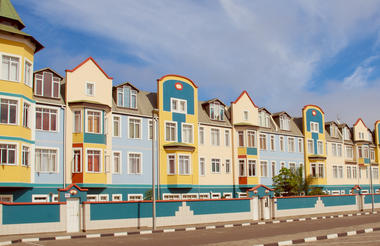
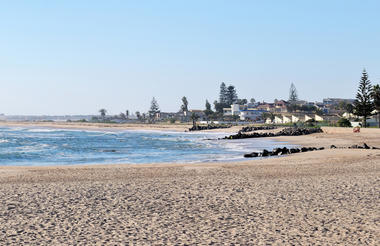
Standard Room (Sea-view) – Dinner, Bed and Breakfast Basis
The fascinating drive today takes you along the Skeleton Coast, past the Zelia shipwreck and onwards via Terrace Bay, the last accessible camp along the Skeleton Coast before you enter the private concessionnorth of Terrace Bay and travel to Möwe Bay, a frontier outpost on the Skeleton Coast which houses prospectors, park wardens, mechanic and even a small police force. Here you are met by the Shipwreck
Lodge guide who will accompany you on your drive of about 1 ½ hour through stunning scenery to Shipwreck Lodge where you will stay for the next three nights.
Kindly note Shipwreck Lodge is located on a private reserve, therefore all lodge activities are strictly done by the local lodge guide on shared basis with other guests!
The next two days are filled with exciting shared guided activities as arranged by the lodge – these include scenic nature drives within the northern Skeleton Coast National Park, drive along the Hoarusib River and sundowner drive to the dune fields. All of these expose the astonishing desert-adapted wildlife, plants and birdlife of the area.
ACTIVITIES ON OFFER
• Day excursions to Möwe Bay seal Colony There are day excursions by vehicle to the Möwe Bay seal colony. Guests will be shown the remnants of the Suiderkus Shipwreck, along the beach past the remains of the Karimona shipwreck, abandoned Westies diamond mine, remains of the Ventura Bomber, to the beautiful natural wind shelter created by the reeds at the Flamingo pools
• Sundowner drive to the roaring dunes. This is an afternoon excursion by vehicle to the Oasis water point, which is complimented by the smoothly sculptured roaring dunes of the concession area to conclude the “must do” sundowner
• Full day Huarusib River excursion A 4x4 trip to the Clay castles, a natural geological formation
• Fishing weather permitting (catch and release basis)
• Quad biking
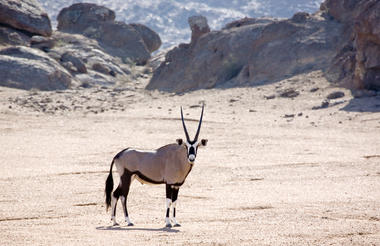
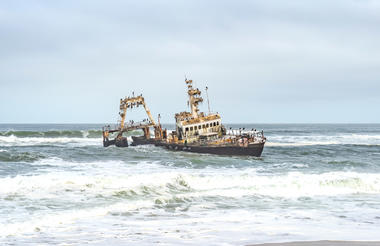
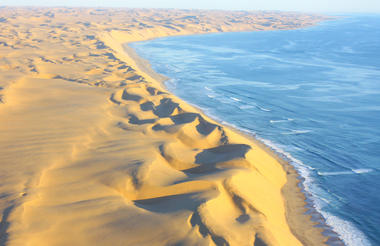
Shipwreck Lodge – 3 nights
Standard Room - Inclusive of Meals, Scheduled Shared Lodge Activities & Most Local Drinks
Continuing on your safari today, the road takes you into the wonderful and diverse region of Damaraland. Damaraland is typified by displays of colour, magnificent table topped mountains, rock formations and bizarre-looking vegetation. The present day landscape has been formed by the erosion of wind, water and geological forces which have formed rolling hills, dunes, gravel plains and ancient river terraces. It is the variety and loneliness of the area as well as the scenic splendour which will reward and astound you, giving one an authentic understanding of the word 'wilderness'.
After an early breakfast you will be treated to an exciting private 4x4 excursion along the ephemeral Aba Huab and Huab River valleys to explore this remarkable region and to search for game, including the elusive desert adapted elephants if they are in the area. Damaraland is home to a variety of desert adapted wildlife and hidden desert treasures. As the elephants are mostly active in the mornings you will
normally have the best chance to see them then before returning to camp for lunch. However, you also have the option to take a picnic lunch and stop to enjoy that in the shade of a large Ana tree by the riverbed, ideally while watching a herd of elephant browsing nearby.
Your private guide will arrange to fit in a visit to Twyfelfontein and other nearby attractions at a suitable time if you haven’t already done so the previous day. On return to camp there should be time to take a walk into the local area with your guide if desired, or simply relax and enjoy some well-deserved leisure time.
Desert Adapted Elephant: In habitats with sufficient vegetation and water an adult elephant consumes as much as 300 kg of roughage and 230 litres of water every day of its life. Consider what a herd of them would eat and drink in a week or a month or a year. Finding an African elephant in a desert? Well, yes and not only elephant, but other large mammals as well, such as black rhinoceros and giraffe. Their ranges extend from river catchments in northern Kaokoveld as far south as the northern Namib. Apart from the Kunene River, seven river courses northwards from the Ugab provide them with possible routes across the desert, right to the Skeleton Coast. The biggest are the Hoarusib, the Hoanib, the Huab and the Ugab Rivers. Desert adapted elephant in Kaokoland and the Namib walk further for water and fodder
than any other elephant in Africa.
The distances between waterholes and feeding grounds can be as great as 68 km. The typical home range of a family herd is larger than 2,000 km², or eight times as big as ranges in central Africa where rainfall is much higher. They walk and feed at night and rest during the day. To meet their nutritional and bulk requirements they browse on no fewer than 74 of the 103 plant species that grow in their range.
Not a separate species or even a subspecies, they are an ecotype unique to Namibia in Africa south of the equator, behaviourally adapted to hyper-arid conditions. Elephant in Mali on the southwestern fringe of the Sahara Desert are the only others known to survive in similar conditions.
You will spend an exciting and memorable morning out rhino tracking with the assistance of local trackers. It is worth noting that these black rhino form part of one of the only free-roaming black rhino populations in Africa and tracking animals in an unfenced and uninhibited environment is an absolute privilege. You will return to camp for a freshly prepared lunch and with time to relax at camp during the
heat of the day.
Later in the afternoon you head out again for a scenic nature drive or walk to explore the surrounding area.
Desert Black Rhinoceros: Namibia is home to the larger of two subspecies of the black rhinoceros found in southern Africa. The only population that remains in the wild, unfenced and outside reserves occupies an arid range in the western Kaokoveld. Their preferred habitat is the mountainous escarpment, but they follow ephemeral rivers into the northern Namib as well, especially when conditions are favorable after rains. They are the only black rhinoceros in Africa that are internationally recognized as a “desert group”. Like desert-adapted elephant, they cover great distances. They walk and feed at night and rest during the day. To meet their nutritional and bulk requirements they browse on no fewer than 74 of the 103 plant species that grow in their range. One of the few animals to eat fibrous Welwitschia leaves; they
even feed heavily on the milkbush (Euphorbia virosa) with its sharp spines and toxic latex, presumably because of the high water and fat content. They are physical defenses of dryland plants without apparent harm. Once widespread in the subcontinent, black rhinoceros are an endangered species. The smaller subspecies, Diceros bicornis minor, does not range into Namibia.
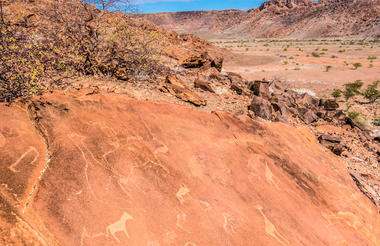
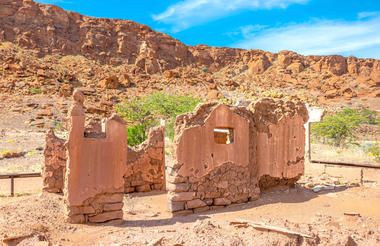
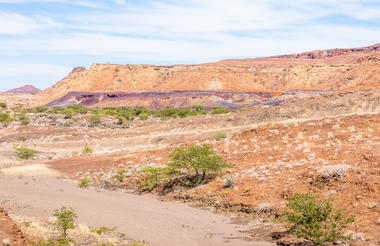
Camp Onduli – 3 nights
Suite - Inclusive of Meals, Activities & Most Local Drinks
Today you set off on your journey to the Ongava Tented Camp, which is situated on the southern border of Etosha National Park. You arrive in time for an afternoon shared game drive on the Ongava Game Reserve with the local camp guide, on shared basis with other camp guests.
Kindly note Ongava Tented Camp is located on a private reserve, therefore all property drives are strictly done by the local camp guide on shared basis with other guests!
Day 9 is dedicated to a full day of exciting game viewing within the central section of Etosha National Park from your private safari vehicle as per your discussion with your guide. You will have to leave the Park before sunset with enough time to relax and freshen up before for dinner. The rest of the evening can be spent game viewing at the camp’s floodlit waterhole where game comes and goes throughout the day and night.
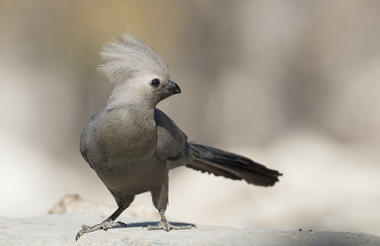
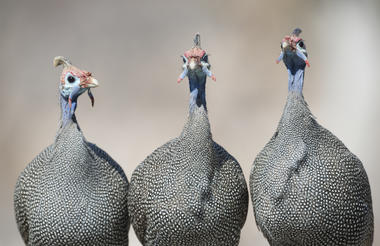
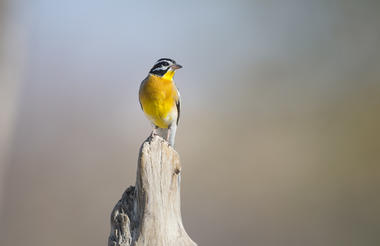
Ongava Tented Camp – 2 nights
Standard Tent – Full Board, Private game drives within the Etosha National Park, Scheduled Shared Camp Activities & Most Local Drinks
Yet another morning dedicated to a full day of exciting game viewing within the Etosha National Park from your private safari vehicle as you make your way from the southern Andersson’s Gate to Halali (where you may stop for lunch) and then on across via selected waterholes such as Goas, which are normally particularly good for game viewing, to Namutoni Camp in the east. You will have to leave the Park before sunset and head out to stay at the luxurious Onguma Fort with enough time to relax and freshen up before for dinner. The rest of the evening can be spent game viewing at the camp’s floodlit waterhole where game comes and goes throughout the day and night.
Kindly note Onguma Fort is located on a private reserve, therefore the afternoon property drive is strictly done by the local camp guide on shared basis with other guests!
Day 11 is another morning dedicated to memorable game drives within the eastern section of Etosha National Park with your guide. You return to camp for lunch and an early afternoon rest, spending your final afternoon on a game drive on the private Onguma Game Reserve, culminating in a sundowner overlooking Fischer’s Pan. You then return after sunset with enough time to freshen up and enjoy your final ‘safari dinner’ overlooking the camp’s floodlit waterhole.



Onguma The Fort – 2 nights
Bush Suite – Full Board, Private game drives within the Etosha National Park, Scheduled Shared PM property drive & Most Local Drinks
Your early departure will take you south from Onguma via Tsumeb, Otavi and Otjiwarongo to reach Okonjima, a wonderful highlight with which to conclude your safari. Okonjima is home to the AfriCat Foundation, a wildlife sanctuary which focuses on the research and rehabilitation of Africa's big cats, especially injured or captured leopard and cheetah. You arrive in time for lunch before embarking on an
exciting and informative shared game drive as arranged by the camp with other guests.
Kindly note Okonjima is located on a private reserve, therefore all camp activities are strictly done by the local camp guide on shared basis with other guests!
Morning activities (seasonal times): Departure 06:00 / 06:30 AM; Return 09:30 / 10:00 AM.
Afternoon activities (seasonal times): Departure: 15:30 / 16:00 PM; Return 19:00 / 19:30 PM.
- Leopard Tracking
- Endangered Species Activity (Game Drive)
- The AfriCat Foundation Carnivore Care And Information Centre (ACCC)
- Off the beaten track (Guided walk & game drive)
Optional activities (Only to be booked and paid directly on location, cannot be guaranteed)
- Pangolin tracking
- Nocturnal drive
- Night hide
Okonjima is home to the AfriCat Foundation, a wildlife sanctuary founded in 1991 that is dedicated to creating conservation awareness, preserving habitat, promoting environmental educational research and supporting animal welfare. Their main focus is Africa's big cats, especially injured or captured leopard and cheetah. AfriCat runs the largest cheetah and leopard rescue and release programme in the world. In the last 17 years over 1 000 of these predators have been rescued with over 85 % being released back into the wild.
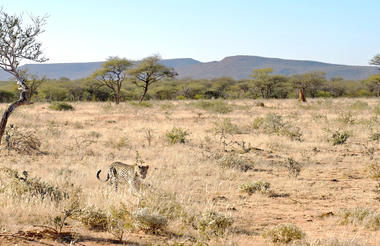
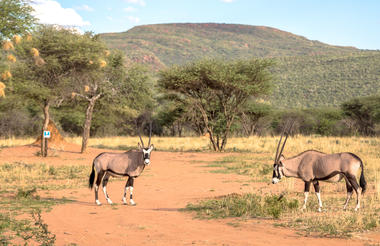
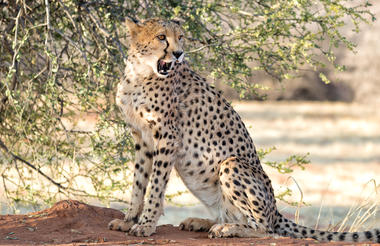
Okonjima Luxury Bush Camp – 1 night
Standard Chalet - Inclusive of Meals, Scheduled Shared Camp Activities & Most Local Drinks
This morning you have the option to partake in the morning activity as arranged by the camp before your departure to Windhoek.
After the morning excursion and freshening up, the journey continues further south to arrive back in Windhoek in the late afternoon. Upon your arrival in Windhoek you will be transferred out to the Windhoek International Airport - departure flights must be no earlier than 21h00 to allow sufficient time for the morning activity and the journey back to Windhoek, or a final night in Windhoek can be arranged at additional cost if required. A final night in Windhoek is highly recommended!
 (1) (002)1.png?fmt=png)


 (1) (002)1.png?fmt=png)
